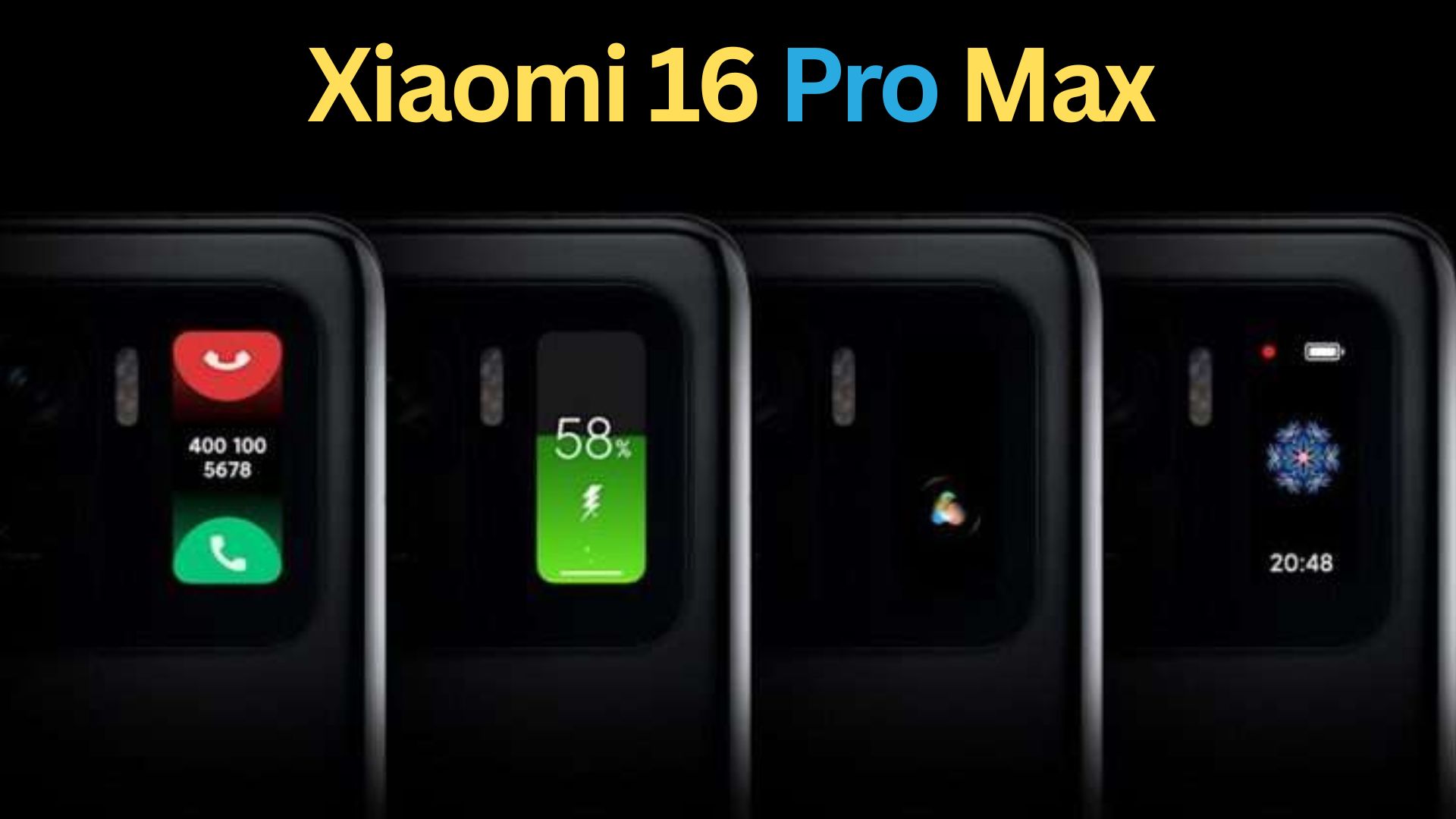A recent leak from industry insider “DCS” suggests that Xiaomi is planning a bold departure from conventional smartphone aesthetics with its upcoming flagship, the Xiaomi 16 Pro Max. Unlike previous models that featured modest secondary displays, this new prototype reportedly sports a full-size secondary display on the back of the device, a design that pushes the envelope of what a modern smartphone can be.

Summary Table
Feature |
Details |
|---|---|
Rear Display Size |
Full-size secondary screen (much larger than Mi 11 Ultra’s 1.1″ panel) |
Technology |
LTPO panel with high resolution, high refresh rate, and strong brightness |
Design Integration |
“Deco layout,” HIAA hole solution integrated with rear camera housing |
Functionality |
Always-On Display clock, live info feeds, smart notifications |
Comparison to Mi 11 Ultra |
Vastly improved usability, clarity, and functionality |
Potential Drawbacks |
Battery drain, fragility, cost, weight, software ecosystem readiness |
Official Site Link |
[Placeholder for Xiaomi 16 Pro Max official page |
Background: Xiaomi’s Experiments with Rear Displays
Xiaomi is no stranger to rear-mounted displays. Back in 2021, the Mi 11 Ultra introduced a small 1.1-inch secondary panel beside the rear camera. That display granted basic functionality-showing the time, notifications, and simple music controls. It was an interesting addition, but limited in both size and capability.
Fast forward to the present, and the design concept being tested for the 16 Pro Max represents a dramatically upgraded approach: a large, fully functional back screen capable of serious functionality.
The 16 Pro Max’s Rear Display: What’s So Special?
According to DCS:
-
The engineering prototype of the Xiaomi 16 Pro Max integrates a full-size secondary display into the rear of the phone.
-
This display resides within or adjacent to the rear camera housing, following an aesthetic “Deco layout” trend.
-
Xiaomi is employing what is described as a HIAA hole solution, similar in concept to the way the cover display works on the Xiaomi MIX Flip series a design that blends camera and screen elements cohesively.
-
The secondary panel reportedly uses LTPO (Low-Temperature Polycrystalline Oxide) technology, which facilitates variable refresh rates for better power efficiency and fluid animation.
-
It also offers high resolution, high refresh rate, and excellent brightness, positioning it as practically as usable as the front screen.
-
Features include Always-On Display (AOD) clock functionality, real-time information feeds, and smart notifications. This makes the rear screen much more functional and immersive than the Mi 11 Ultra’s modest display.
Why This Matters
If the leak holds true, the Xiaomi 16 Pro Max could redefine how flagship smartphones incorporate secondary displays. Here’s why it stands out:
-
Redesigned Rear Aesthetic
Embedding the full-size screen into the rear camera housing creates a unified, modern look. It moves beyond mere gimmicks, aiming for coherent design integration. -
Enhanced Practicality
Instead of subtle glances at notifications, users might interact with the rear screen for more checking live feeds, controlling media, glancing at widgets without turning the phone around. -
Innovative Display Technology
LTPO allows intelligent refresh-rate adjustments to balance smooth visuals with battery longevity. A high brightness and resolution mean outdoor visibility and clarity are also improved. -
New UX Possibilities
With independent rear content, Xiaomi could introduce novel user flows: secure notifications, secondary controls, camera viewfinder mirroring, or even privacy-focused interactions.
Potential Challenges and Considerations
-
Battery impact: A second large, bright panel may draw considerable power, despite LTPO efficiency gains.
-
Durability: Placing more glass or display area on the back may increase vulnerability to drops or scratches.
-
Cost and Weight: Advanced display materials and engineering could drive up price or heft though Xiaomi often balances features with competitive pricing.
-
Software Ecosystem: To capitalize on dual-screen utility, Xiaomi must deliver software that truly leverages the rear display in everyday use not just decoration.
FAQs
Q1: Is this rear screen confirmed?
Answer: No, the information comes from a leak attributed to “DCS,” an industry insider. It describes an engineering prototype, meaning the final commercial product could differ or even omit the rear screen altogether.
Q2: How does this differ from previous Xiaomi rear displays?
Answer: The Mi 11 Ultra had a tiny 1.1-inch panel for basic info. The new display is reportedly full-size, high-res, high-refresh, and capable of rich interaction-an entirely new tier of rear display functionality.
Q3: What is LTPO technology, and why is it important?
Answer: LTPO (Low-Temperature Polycrystalline Oxide) is a type of OLED backplane tech that allows dynamic refresh rates (e.g., switching between 1 Hz, 10 Hz, 120 Hz) to balance smooth visuals with energy efficiency. It’s valuable for a display that’s always on or frequently active, as it helps save battery life.
Q4: Could this rear display be used as a viewfinder?
Answer: Potentially yes. If Xiaomi integrates it well, users may be able to preview shots or use the rear screen for framing selfies or creative photography, but this depends on software implementation.
Q5: How might having a large rear screen affect durability?
Answer: A larger screen on the back increases the risk of damage from drops or scratches. Xiaomi will need to engineer robust glass or protective coatings, and cases may become essential.
For More Information Click HERE